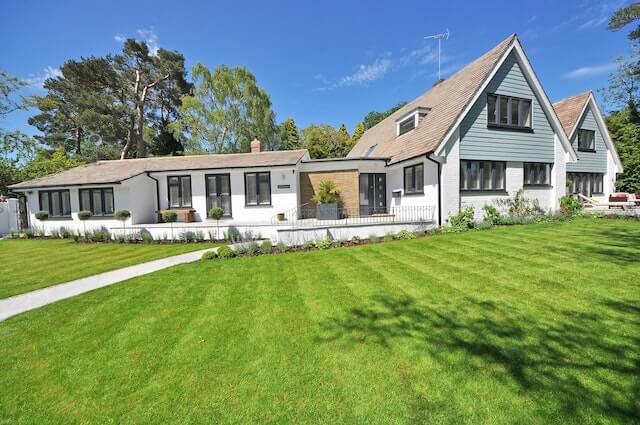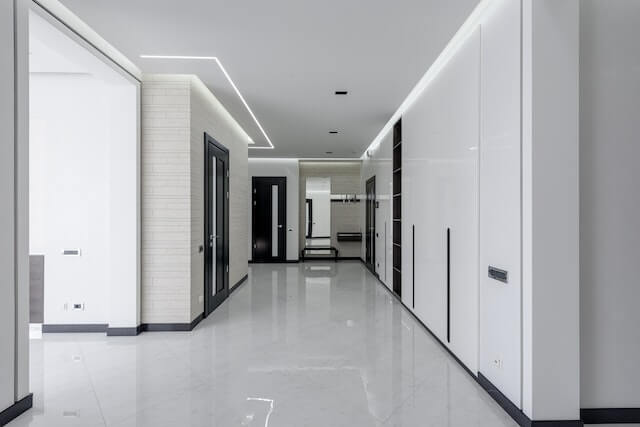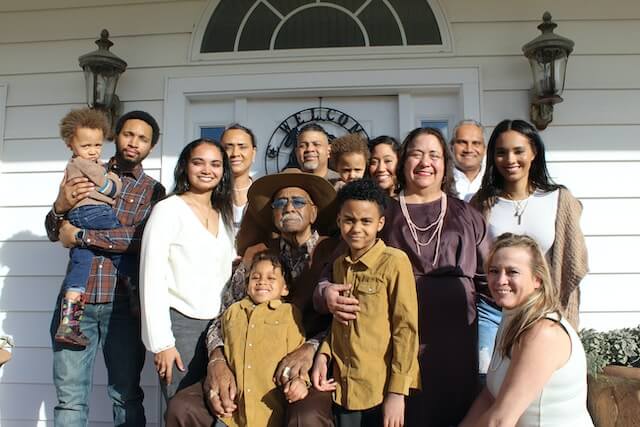In recent years, there has been a notable shift in the landscape of rental real estate. There has been a growing demand for multi-generational rental properties.
The concept of multi-generational living is where multiple generations of a family share a single dwelling. It has been a traditional way of life in many cultures for centuries. However, it wasn’t until recent years that this living arrangement started to gain prominence in Western societies.
This evolving trend has been spurred by a convergence of factors. This includes changing demographics, economic realities, and, significantly, the seismic impact of the COVID-19 pandemic. Because of that, families have sought ways to stay connected and navigate economic uncertainties.

According to data from the Pew Research Center, as of March 2021, a record 59.7 million Americans, or 18% of the U.S. population, were living in multi-generational households. Back in 2019, the number was only 58.4 million. This shift has not only reshaped the housing landscape but also highlighted the growing need for multi-generational rental properties.
We will explore why and how this trend emerged and gained prominence. Furthermore, we will discuss why landlords should take heed of this transformative shift in the rental market.
The Emergence of Multi-Generational Living
The roots of the multi-generational living trend can be traced back to demographic shifts in the United States. Data from the U.S. Census Bureau reveals that the number of multi-generational households has been steadily rising over the past few decades. However, the catalyst that truly accelerated this trend was the COVID-19 pandemic. The pandemic forced many families to reevaluate their living arrangements. As a result, this prompted adult children to move back in with their parents. This allowed them to share expenses and provide mutual support during uncertain times. The economic fallout from the pandemic, including job losses and financial instability, further underscored the practicality of multi-generational living.
Therefore, there’s a heightened interest in properties that can accommodate multiple generations while providing each with privacy and shared spaces.
Why Landlords Should Pay Attention
Expanding Tenant Base
For landlords and property owners, staying attuned to the growing need for multi-generational rental properties is paramount. It offers a unique business opportunity to tap into an emerging and potentially lucrative market segment. By accommodating multi-generational households, landlords can tap into a potentially large, stable, diverse, and underserved tenant base. By doing so, they can reduce the risk associated with vacancies.
Long-Term Profitability
Moreover, being responsive to this trend demonstrates adaptability and forward-thinking. Properties that cater to multi-generational living needs can command higher rental rates and lower turnover rates, resulting in increased long-term profitability. These rental units often lead to longer lease durations due to the stability and convenience they offer, providing a steady income stream for landlords.
Enhanced Reputation
Fostering a reputation for providing housing solutions that address the evolving needs of society can enhance a landlord’s standing in the rental market, attracting a wider range of tenants. Landlords who are known for understanding and accommodating the unique demands of multi-generational living can generate positive word-of-mouth referrals and increase interest from prospective renters.
Impact on the Rental Housing Market
The rise of multi-generational rental properties is poised to have a profound impact on the rental housing market, influencing property design, amenities, and tenant expectations.
Adaptable Living Spaces
Multi-generational rental units require adaptable living spaces that can function both independently and collectively. Families want the flexibility to convert rooms into home offices, remote learning spaces, or private living quarters for aging parents or adult children. Landlords can appeal to this demand by ensuring that rental properties are designed with versatility in mind. This means reimagining floor plans to include separate living areas and kitchens or shared communal spaces, depending on the preferences and needs of the tenants. Landlords should consider the flexibility of their property layouts and the ease with which they can be adapted to different living arrangements.

Consider properties with extra bedrooms, finished basements, or accessory dwelling units (ADUs) that one can easily adapt to meet the unique needs of multi-generational households. Highlighting these adaptable features in the property listings you will publish on Padleads. Syndicate the listing to websites frequented by tenants seeking flexible living arrangements and intend to live with extended family.
Housing Affordability
Multi-generational living offers a practical solution for housing affordability challenges. The financial benefits of shared expenses extend beyond the immediate family, as they allow multiple generations to enjoy comfortable living without straining their budgets. Landlords who offer multi-generational rental properties contribute to housing affordability by providing spacious accommodations that are cost-effective for tenants. By doing so, they contribute to greater housing stability and economic well-being within communities, ultimately strengthening the overall social fabric.
Inclusive Amenities
To attract and retain tenants in multi-generational households, landlords may need to consider the inclusion of amenities that cater to a broader demographic range. Communal areas, exercise facilities, and well-designed kitchens that accommodate multiple cooks are just a few examples. These features can enhance the quality of life for tenants in multi-generational households and attract more interest from prospective renters.
Property Maintenance
Multi-generational living can result in higher wear and tear on a property due to increased occupancy. Landlords should implement effective property maintenance and repair strategies to ensure that their units remain in excellent condition. Proactive maintenance can help extend the lifespan of appliances, fixtures, and common areas, reducing overall operational costs.
Tenant Screening and Leasing Practices
As the composition of tenant households evolves, so too should tenant screening and leasing practices. Landlords may need to be flexible in their screening criteria to accommodate a range of incomes and credit histories within a single household. Crafting leases that clarify the responsibilities and expectations of all tenants, while respecting their privacy and autonomy, is crucial for harmonious living in multi-generational rental properties.

In conclusion, the increasing demand for multi-generational rental properties is a transformative trend in the rental housing market. Landlords who embrace this trend have an opportunity to diversify their tenant base, increase rental income, and contribute to the evolving landscape of the rental housing market. By recognizing the importance of multi-generational living and adapting their properties accordingly, landlords can establish longevity in an ever-changing rental market.